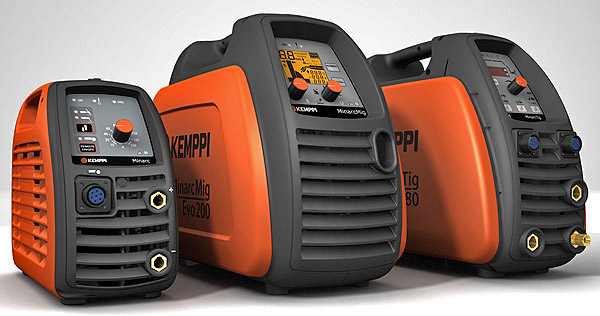| You are here: Home » Import CAD Formats » Parasolid |

|
Parasolid is a 3D geometric modelling toolkit developed by Siemens PLM's components group in Cambridge, U.K. This toolkit provides hundreds of complex mathematical algorithms and functions which allow software developers to create 3D modelling software based on "BREP solids" modelling techniques (among others). The toolkit uses a "transmit" file format to move data to and from the Parasolid toolkit in native format. The ASCII form uses the .x_t file extension and the binary form uses the .x_b file extension.Since the late 1990s Parasolid has been used as the core modelling kernel by well known MCAD programs such as Unigraphics NX, SOLIDWORKS, Solid Edge, MicroStation, ANSYS, Delcam and others. Newer versions of the JT file format also include Parasolid functionality by way of the "XT BREP" geometry primitive.
Relative to Okino, our user base and how they generally perform MCAD file conversions:
- We see the Parasolid XT transit file more as a "moving target" file format and not as a static, universal format like STEP or IGES. Parasolid files are based on "schemas" (which are sort of like recipe cards) that allow the file format to evolve and change from version to version. The Parasolid XT file format is not so much vendor-neutral since it is controlled and evolved by Siemens, and it its structure is reflective of the underlying constructs of the Parasolid modelling toolkit.
- We would recommend that you primarily use the Parasolid file format to move data between 3D MCAD programs that are both based on the Parasolid toolkit, such as moving to/from SOLIDWORKS and Unigraphics NX.
- For our core Okino users, we would generally have them use a specific and different file format other than Parasolid XT, as outlined in our "CAD Data Sourcing Suggestons and Rules". For example, native sldasm/sldprt files from SOLIDWORKS, native files from ProE/Creo, STEP AP214 or JT files from UG NX and Solid Edge, DWF-3D or STEP AP214 from Autodesk Inventor, JT from Siemens Teamcenter, etc.
Okino's PolyTrans|CAD provides a Parasolid file import conversion solution used by the world's primary & professional engineering, aerospace, military, corporate, animation/multi-media and VR/AR industries.
Kemppi Welding Machines, Parasolid to LightWave, by Spikey Animation and Kemppi Oy. See explanation here.
Technical details about Okino's Parasolid XT file importer can be read here.
Okino also recommends that you import your CAD files via these native importers (among others):
|
Autodesk Inventor
CATIA v5 Microstation ProE/Creo Rhino 3D Solid Edge SOLIDWORKS |

|
The Parasolid v1 modelling toolkit was originally developed by John Owen and his team at Shape Data Ltd, released in 1989 along with a 'C' API. It would then change hands through UGS (Unigraphics Solutions), EDS (Electronic Data Systems) and then Siemens. Current versions of the Parasolid modelling toolkit can still load in XT files going back as far as v1.0. There are estimated to be 130 software vendors who use Parasolid.
The Parasolid XT file format is openly published as part of the ISO JT specification and included in the Siemens JT Open toolkit (of which Okino was one of the first licensees of this toolkit, used as the basis of the Okino JT importer and exporter modules).
Parasolid XT transit files from the CAD and MCAD industry will typically contain these fundamental elements and structures:
- NURBS analytic/parametric geometry
- NURBS/bicubic curves & 3D polylines
- 'BREP' topology information (to define 'solids' geometry)
- CAD assembly hierarchy and structure
- Geometry instancing
- Part naming
- Meta data
- Unit-of-measure, geometric tolerance and other cursory source-modeller information
- And basic materials.
The very first question that we ask of our new customers is 'From which MCAD program is your Parasolid file coming from?'. That can be very important information, depending on the name of the source MCAD program.
The header portion of a Parasolid XT transit file is ASCII and easily readable in any general text editor. After opening the file in such a text editor you will want to look for the text label 'APPL' close to the start of the file. The name of the originating MCAD program will usually be defined within that label. For example, a file exported from Autodesk Inventor will typically use the label "APPL=Autodesk Inventor", defined as follows in the header section of the file:
**PART1; MC_MODEL=; OS=Windows; APPL=Autodesk Inventor; FORMAT=text; GUISE=transmit; **PART2; SCH=SCH_3100154_31001; USFLD_SIZE=0; **PART3; **END_OF_HEADER
Unlike with our STEP file example, Parasolid XT transmit files are NOT easy to read by a lay person nor without the availability of the corresponding "schema" file (which provides the decoding tables). Nevertheless, in this section we provide a very coarse overview of how to visually read the ASCII contents of a Parasolid x_t file.
For this example we will examine the definition of a simple geometric sphere model created by Autodesk Inventor. In some 3D file formats the definition of a sphere could be as simple as one line but Parasolid x_t requires 74 lines (vs 206 lines for STEP).
- For brevity, we'll provide the original Parasolid x_t file listing in a separate HTML page for your review.
- After many hours of tedious work, we have provided the hand-parsed and decoded version of this Parasolid file in this separate and full listing for your review.
Due to the length of the decoded file (560 lines), and its non-linearity, we have chosen to highly simplify that listing and re-arrange a portion of it which defines the BREP topology of the sphere primitive:
- The number in round brackets is the Parasolid entity number (which matches the definition in the schema file).
- The 'Index' number uniquely identifies each entity node in the file.
- The numbers in the sub-lists make reference to other entity nodes by way of their unique Index numbers (they are essentially pointers).
APPL=Autodesk Inventor; SCH=SCH_3100154_31001; T51 : TRANSMIT FILE created by modeller version 310015417 SCH_3100154_310010 -->> BODY (12) 1 - Index # 1 = First node of the file 4 - Shell 5 - Boundary_surface 6 - Boundary_curve 7 - Boundary_point 8 - Region 9 - Edge 10 - Vertex -->> SHELL (13) 4 - Index 15 - Face 16 - Region -->> REGION (19) 16 - Index 4 - Shell -->> FACE (14) 15 - Index 25 - Loop 4 - Shell 5 - Surface 22 - Front Shell -->> LOOP (15) 25 - Index 23 - HalfEdge 15 - Face -->> HALFEDGE (17) 23 - Index 25 - Loop 10 - Vertex 26 - Other 9 - Edge -->> VERTEX (18) 10 - Index 23 - HalfEdge 24 - Next 7 - Point -->> XYZ POINT (29) 7 - Index 10 - Next 21 - Previous 0 .0508 9e-32 16e-33 -->> VERTEX (18) 26 - HalfEdge 10 - Previous 21 - Point -->> EDGE (16) 9 - Index 23 - HalfEdge 6 - Curve -->> B_CURVE (134 - BSpline Curve) 6 - Index 19 - NURBS_CURVE (136) 20 - CURVE_DATA (135) -->> NURBS_CURVE (136) 19 - Index 3 - Degree 41 - bspline_vertices 42 - knot_mult 43 - knots --> BSPLINE_VERTICES (45) 21 - Length 41 - Index -.0508 0 0 ... .0508 666133814775094e-32 0 -->> KNOT_MULT (127) 5 42 - Index 4 1 1 1 4 -->> KNOT_SET (128) 5 43 - Index 0 1 2 3 4 -->> CURVE_DATA (135) 20 - Index 1 0 -->> B_SURFACE (124 - BSpline Surface) 5 - Index 15 - Face 17 - NURBS_SURF (126) 18 - SURFACE_DATA (125) -->> NURBS_SURFACE (126) 17 - Index 44 -- BSPLINE_VERTICES 45 -- KNOT_MULT 46 -- KNOT_MULT 47 -- KNOT_SET 48 -- KNOT_SET -->> BSPLINE_VERTICES (45) 147 - Length 44 - Index -.0508 0 0 ... .0508 2e-32 1e-33 (ETC) -->> SURFACE_DATA (125) 18 - Index 0 4 0 4 0 4 0 4 2 DDPPDDPP????0 0 0 0 -->> SHELL (13) 22 - Index 8 - Region 15 - Front face (ptr) -->> REGION (19) 8 - Index 1 - body 16 - next 22 - Shell (ETC)
Okino's PolyTrans|CAD imports, optimizes and intelligently converts Parasolid files into all major 3D file formats, animation packages, military VisSim, virtual reality (VR) and augmented reality (AR) systems (such as Unity and Unreal Engine), and third party/OEM integrations.
Parasolid XT files can be effortlessly and directly converted into such popular & common destinations such as:
- Parasolid (.x_t, .x_b) to AutoCAD (.dwg, .dxf)
- Parasolid (.x_t, .x_b) to 3ds Max (.max)
- Parasolid (.x_t, .x_b) to CADMATIC (.3dp)
- Parasolid (.x_t, .x_b) to CINEMA 4D (.c4d)
- Parasolid (.x_t, .x_b) to COLLADA (.dae)
- Parasolid (.x_t, .x_b) to DWF-3D (.dwf)
- Parasolid (.x_t, .x_b) to FBX (for Unity, Unreal and MODO)
- Parasolid (.x_t, .x_b) to JT Open (.jt)
- Parasolid (.x_t, .x_b) to LightWave (.lws, .lwo)
- Parasolid (.x_t, .x_b) to Maya (.mb)
- Parasolid (.x_t, .x_b) to Microstation DGN (.dgn)
- Parasolid (.x_t, .x_b) to OpenFlight (.flt)
- Parasolid (.x_t, .x_b) to NGRAIN 3KO (.3KO)
- Parasolid (.x_t, .x_b) to Rhino-3D (.3dm)
- Parasolid (.x_t, .x_b) to SketchUp (.skp)
- Parasolid (.x_t, .x_b) to STL (.stl)
- Parasolid (.x_t, .x_b) to Visual Components
- Parasolid (.x_t, .x_b) to Acrobat-3D (PDF via U3D) (.u3d)
- Parasolid (.x_t, .x_b) to VRML2 & X3D (.wrl, .x3d)
- Parasolid (.x_t, .x_b) to Wavefront (.obj)
- Parasolid (.x_t, .x_b) to dozens more 3D file formats


